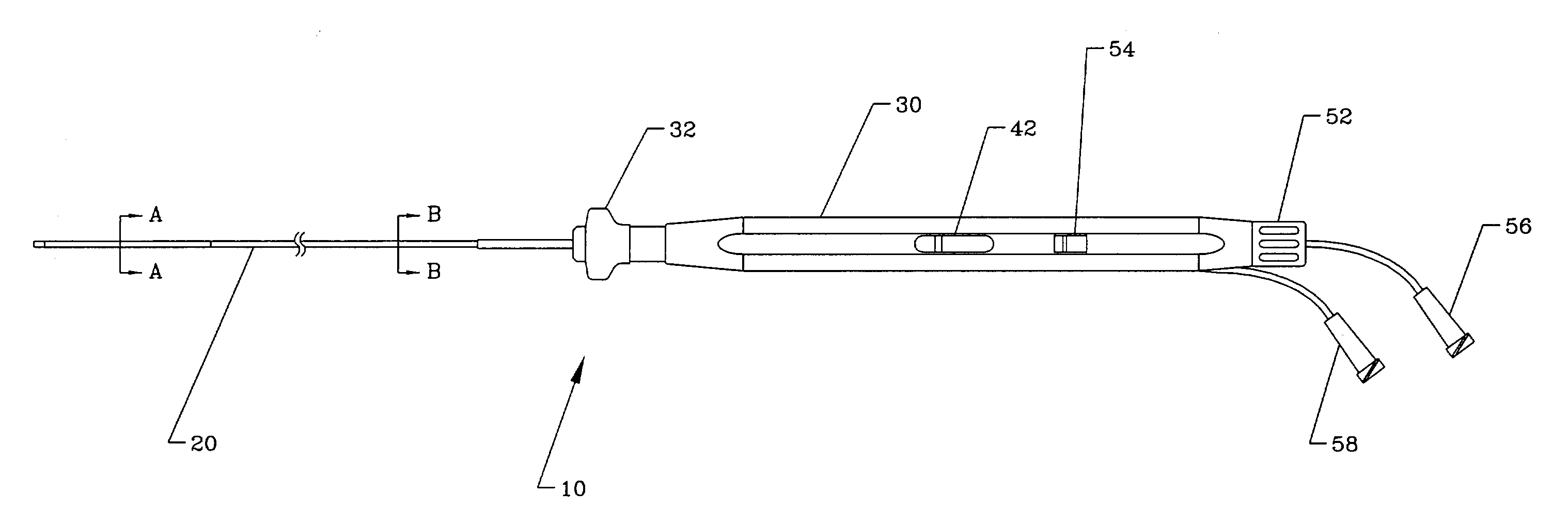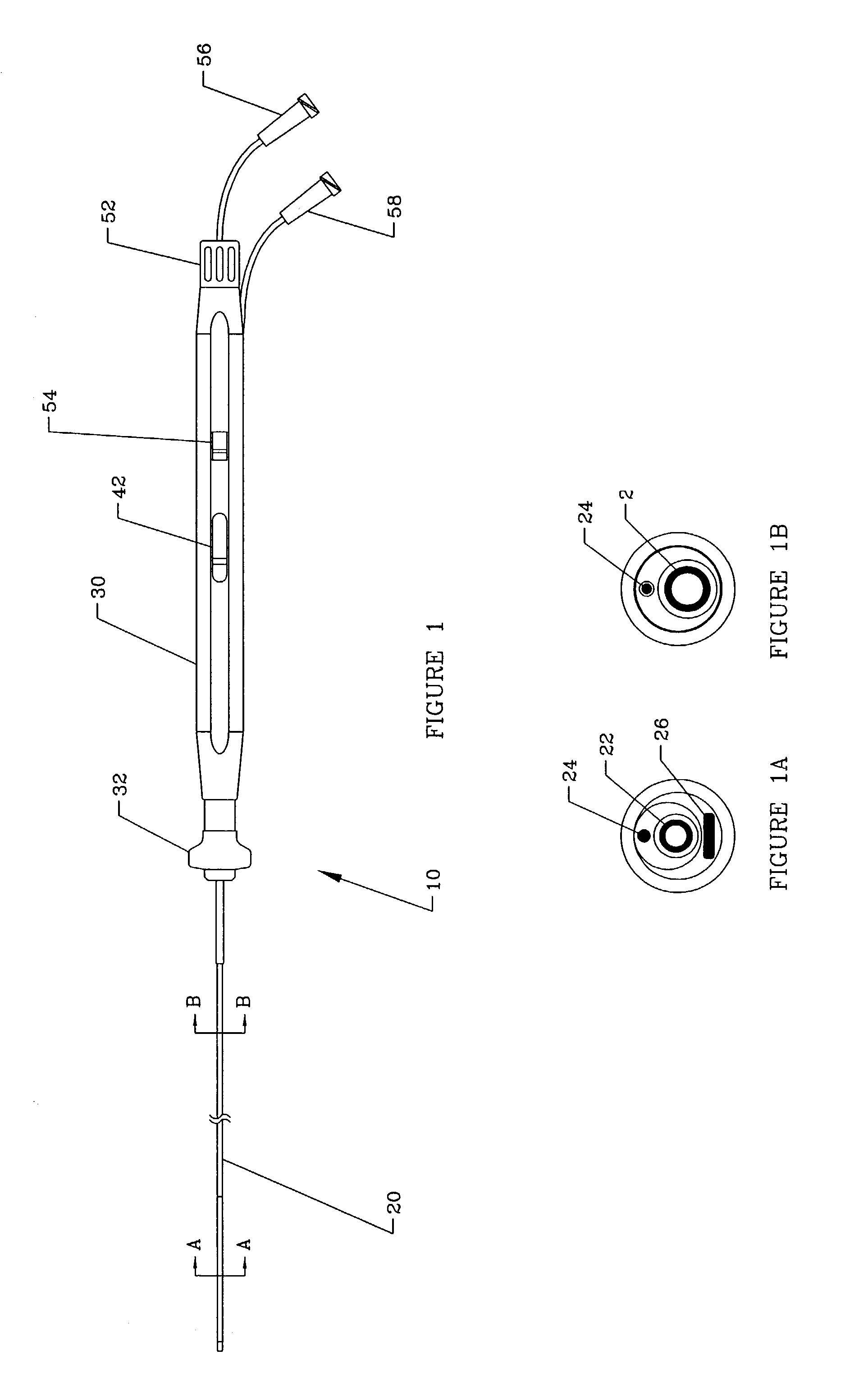Deflectable microimplant delivery system
a delivery system and micro-implant technology, applied in the field of catheter-based delivery systems, can solve the problems of significant loss of functioning heart muscle, muscle cells or cardiomyocytes, that cannot be replaced by the body, and cannot meet the needs of patients, and achieve the effect of reducing resistance to the flow
- Summary
- Abstract
- Description
- Claims
- Application Information
AI Technical Summary
Benefits of technology
Problems solved by technology
Method used
Image
Examples
Embodiment Construction
[0028]The present invention relates to a deflectable catheter assembly including a distal shaft section, a proximal handle subassembly and an inner core member for delivery of therapeutic agents, cellular-based materials, or a combination thereof, to diseased, injured or defective tissue. The following description is presented to enable one of ordinary skill in the art to make and use the invention and is provided in the context of a patent application and its requirements. Various modifications to the embodiments described will be readily apparent to those skilled in the art and the generic principles herein may be applied to other embodiments. Thus, the present invention is not intended to be limited to the embodiments shown but is to be accorded the widest scope consistent with the principles and features described herein.
[0029]An overall view of the deflectable microimplant delivery system 10 is given in FIG. 1. This catheter apparatus includes shaft or working length (that port...
PUM
 Login to View More
Login to View More Abstract
Description
Claims
Application Information
 Login to View More
Login to View More - R&D
- Intellectual Property
- Life Sciences
- Materials
- Tech Scout
- Unparalleled Data Quality
- Higher Quality Content
- 60% Fewer Hallucinations
Browse by: Latest US Patents, China's latest patents, Technical Efficacy Thesaurus, Application Domain, Technology Topic, Popular Technical Reports.
© 2025 PatSnap. All rights reserved.Legal|Privacy policy|Modern Slavery Act Transparency Statement|Sitemap|About US| Contact US: help@patsnap.com



